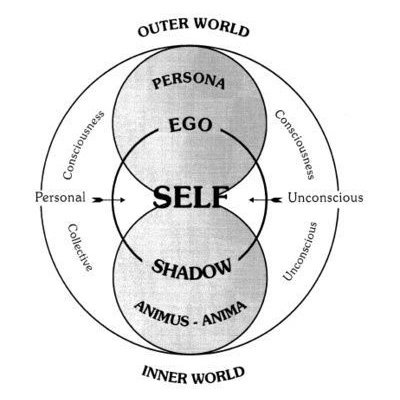Carl Jung: Pioneer into the Unconscious
In the vast landscape of psychology and psychotherapy, few figures stand as tall as Carl Jung. Born in Switzerland in 1875, Jung was a brilliant psychiatrist and psychoanalyst whose groundbreaking work has had a profound impact on our understanding of the human psyche. His contributions to the field of psychotherapy have not only enriched the way we perceive ourselves but have also opened doors to exploring the depths of the unconscious mind. Let's delve into the life and work of this influential figure and uncover the legacy he left behind.
The Formation of Analytical Psychology
Jung's journey in the field of psychology began with the study of medicine. Later, he developed an interest in psychiatry, which led him to work alongside the pioneering Sigmund Freud. Although they shared a deep intellectual camaraderie initially, Jung's perspective on the human mind eventually diverged from Freud's, leading to the dissolution of their collaboration.
Jung's most enduring contribution was the development of analytical psychology. Unlike Freud's emphasis on the role of the personal unconscious, Jung introduced the concept of the "collective unconscious." He believed that all human beings share a reservoir of universal experiences, symbols, and archetypes. These archetypes, innate and timeless, shape our thoughts, emotions, and behaviors, often manifesting in dreams, myths, and cultural symbols.
Understanding Personality Types
Jung's insights extended to the understanding of personality types. He classified individuals into two broad categories: extroverts and introverts. He proposed that these traits represent fundamental orientations of an individual's energy—whether directed outwardly towards the external world or inwardly towards the inner world of thoughts and emotions.
Additionally, Jung identified four psychological functions: thinking, feeling, sensing, and intuition. He believed that the interplay between these functions influenced how individuals perceive and interact with the world around them, shaping their personalities.
Psychotherapy and Individuation
Jung's therapeutic approach focused on helping individuals achieve a process called "individuation." This process entails the realization and integration of both conscious and unconscious elements of the self, leading to a harmonious and balanced personality. By exploring and embracing the contents of the unconscious, individuals could develop a deeper understanding of themselves, thus enabling personal growth and self-actualization.
Dream Analysis and Symbols
Dream analysis was a central tool in Jungian psychotherapy. Jung saw dreams as a means of communication between the conscious and unconscious mind, a way for the unconscious to bring repressed thoughts and emotions to the surface. By analyzing dream symbols and archetypes, therapists can unravel the hidden messages and facilitate the individuation process.
Legacy and Influence
Carl Jung's impact on psychotherapy cannot be overstated. His pioneering ideas and concepts paved the way for many subsequent developments in the field of psychology. Jung's influence extends beyond the realm of psychotherapy, touching upon art, literature, religion, and spirituality. His works continue to be studied and applied by therapists and scholars worldwide, and the relevance of his theories persists in contemporary therapeutic practices.
Carl Jung's legacy as a trailblazer in psychotherapy and the study of the unconscious mind is firmly established. His theories have enriched our understanding of human behavior, personality, and the mysteries of the mind. Jung's influence continues to inspire generations of psychologists and therapists, shaping the way we explore the depths of the human psyche and aiding individuals in their journey towards self-discovery and personal growth.
Content generated with the assistance of ChatGPT, an AI language model developed by OpenAI.



